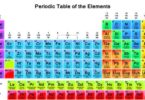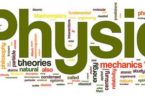Questions and Answers for Microscope and Telescope:
A Galileo telescope has an objective of focal length 100 cm and magnifying power 50. The distance between the two lenses in normal adjustment will be
(a) 98 cm
(b) 100 cm
(c) 150 cm
(d) 200 cm
An astronomical telescope has an objective and eye-piece lens of powers 0.5 D and 20 D respectively, its magnifying power will be
(a) 8
(b) 20
(c) 30
(d) 40
The magnifying power of a simple microscope can be increased if we use an eye-piece of
(a) Higher focal length
(b) Smaller focal length
(c) Higher diameter
(d) Smaller diameter
Who among the following was the main contributor to building and improvising telescopes?
(a) Marconi
(b) Edison
(c) Newton
(d) Galileo
Related: Physical World and Measurement MCQ
A Galileo telescope has an objective of focal length and magnifying power of 50. The distance between the two lenses in normal adjustment will be
(a) 96 cm
(b) 98 cm
(c) 102 cm
(d) 104 cm
A telescope has an objective of focal length 50 cm and an eye piece of focal length 5 cm. The least distance of distinct vision is 25 cm. The telescope is focussed on distinct vision on a scale 200 cm away. The separation between the objective and the eye-piece is
(a) 75 cm
(b) 60 cm
(c) 71 cm
(d) 74 cm
The focal lengths of the objective and eye-piece of a telescope are respectively 100 cm and 2 cm. The moon subtends an angle of 0.5o at the eye. If it is looked through the telescope, the angle subtended by the moon’s image will be
(a) 10o
(b) 50o
(c) 25o
(d) 10o
An astronomical telescope of ten-fold angular magnification has a length of 44 cm. The focal length of the objective is
(a) 4 cm
(b) 40 cm
(c) 44 cm
(d) 440 cm
Related: Arithmetic and Geometric Progressions Problem
A Gallilean telescope has objective and eye-piece of focal lengths 200 cm and 2 cm respectively. The magnifying power of the telescope for normal vision is
(a) 90
(b) 100
(c) 108
(d) 198
The magnifying power of a telescope is 9. When it is adjusted for parallel rays, the distance between the objective and the eye-piece is found to be 20 cm. The focal length of the two lenses are
(a) 18 cm, 2 cm
(b) 11 cm, 9 cm
(c) 10 cm, 10 cm
(d) 15 cm, 5 cm
Large aperture of telescope are used for
(a) Large image
(b) Greater resolution
(c) Reducing lens aberration
(d) Ease of manufacturing
The aperture of the objective lens of a telescope is made large so as to
(a) Increase the magnifying power of the telescope
(b) Increase the resolving power of the telescope
(c) Make image aberration less
(d) Focus on distant objects
Related: Practice Problems Chemical Equilibrium
The focal length of the objective of a terrestrial telescope is 80 cm and it is adjusted for parallel rays, then its magnifying power is 20. If the focal length of the erecting lens is 20 cm, then the full length of telescope will be
(a) 84 cm
(b) 100 cm
(c) 124 cm
(d) 164 cm
A simple telescope, consisting of an objective of focal length 60 cm and a single eye lens of focal length 5 cm is focussed on a distant object in such a way that parallel rays come out of the eye lens. If the object subtends an angle 2o at the objective, the angular width of the image
(a) 10o
(b) 24o
(c) 50o
(d) 1/6o
The image formed by an objective of a compound microscope is
(a) Virtual and enlarged
(b) Virtual and diminished
(c) Real and diminished
(d) Real and enlarged
Resolving the power of a microscope depends upon
(a) Wavelength of light used, directly
(b) Wavelength of light used, inversely
(c) Frequency of light used
(d) Focal length of objective
Related: ohm’s law conductivity quiz
An observer looks at a tree of height 15 m with a telescope of magnifying power 10. To him, the tree appears
(a) 10 times taller
(b) 15 times taller
(c) 10 times nearer
(d) 15 times nearer
If the red light is replaced by blue light illuminating the object in a microscope, the resolving power of the microscope
(a) Decreases
(b) Increases
(c) Gets halved
(d) Remains unchanged
A person using a lens as a simple microscope sees an
(a) Inverted virtual image
(b) Inverted real magnified image
(c) Upright virtual image
(d) Upright real magnified image
Resolving the power of a microscope depends upon
(a) The focal length and aperture of the eye lens
(b) The focal lengths of the objective and the eye lens
(c) The apertures of the objective and the eye lens
(d) The wavelength of light illuminating the object
Related: Electric potential questions and answers
When the length of a microscope tube increases, its magnifying power?
(a) Decreases
(b) Increases
(c) Does not change
(d) May decrease or increase
In order to increase the magnifying power of a compound microscope
(a) The focal lengths of the objective and the eye piece should be small
(b) Objective should have a small focal length and the eye piece large
(c) Both should have large focal lengths
(d) The objective should have a large focal length and eye piece should have small
For which of the following colors, the magnifying power of a microscope will be maximum
(a) White color
(b) Red color
(c) Violet color
(d) Yellow color
Finger prints are observed by the use of
(a) Telescope
(b) Microscope
(c) Gallilean telescope
(d) Concave lens
Related: Electric field multiple choice questions and answers
Microscope is an optical instrument which
(a) Enlarges the object
(b) Increases the visual angle formed by the object at the eye
(c) Decreases the visual angle formed by the object at the eye
(d) Brings the object nearer
In a compound microscope, the intermediate image is
(a) Virtual, erect and magnified
(b) Real, erect and magnified
(c) Real, inverted and magnified
(d) Virtual, erect and reduced
In a compound microscope, cross-wires are fixed at the point
(a) Where the image is formed by the objective
(b) Where the image is formed by the eye-piece
(c) Where the focal point of the objective lies
(d) Where the focal point of the eye-piece lies
The focal length of objective of a telescope is 60 c.m. To obtain a magnification of 20, the focal length of the eye-piece should be
(a) 2cm
(b) 5cm
(c) 4cm
(d) 3cm
Related: friction questions
The relative difference in focal lengths of the objective and eye lens in the microscope and telescope is given as
(a) It is equal in both
(b) It is more in the microscope
(c) It is more in telescope
(d) There may be more in any one
On which of the following does the magnifying power of a telescope depend?
(a) The focal length of the objective only
(b) The diameter of aperture of the objective only
(c) The diameter of aperture of the objective and that of the eye piece
(d) The focal length of the objective and that of the eye piece
The length of a telescope is 36 cm. The focal lengths of its lenses can be
(a) 30 cm, 6 cm
(b) – 30 cm, – 6 cm
(c) 30 cm, – 6 cm
(d) – 30 cm, 6 cm







There are two major types of what is the best microscope for cells, and these are digital and fixed. The digital one uses a computer to provide the images and it can be adjusted easily depending on the size of the cells to be viewed.